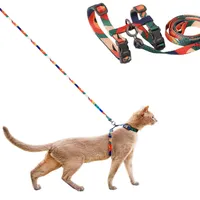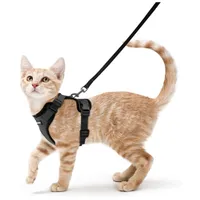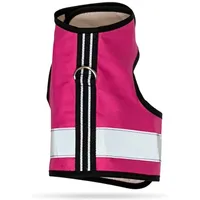Three types of cat harnesses (and how to choose the best one)
Struggling to choose between the different types of cat harnesses? Here's how to find the purr-fect fit for your feline friend.
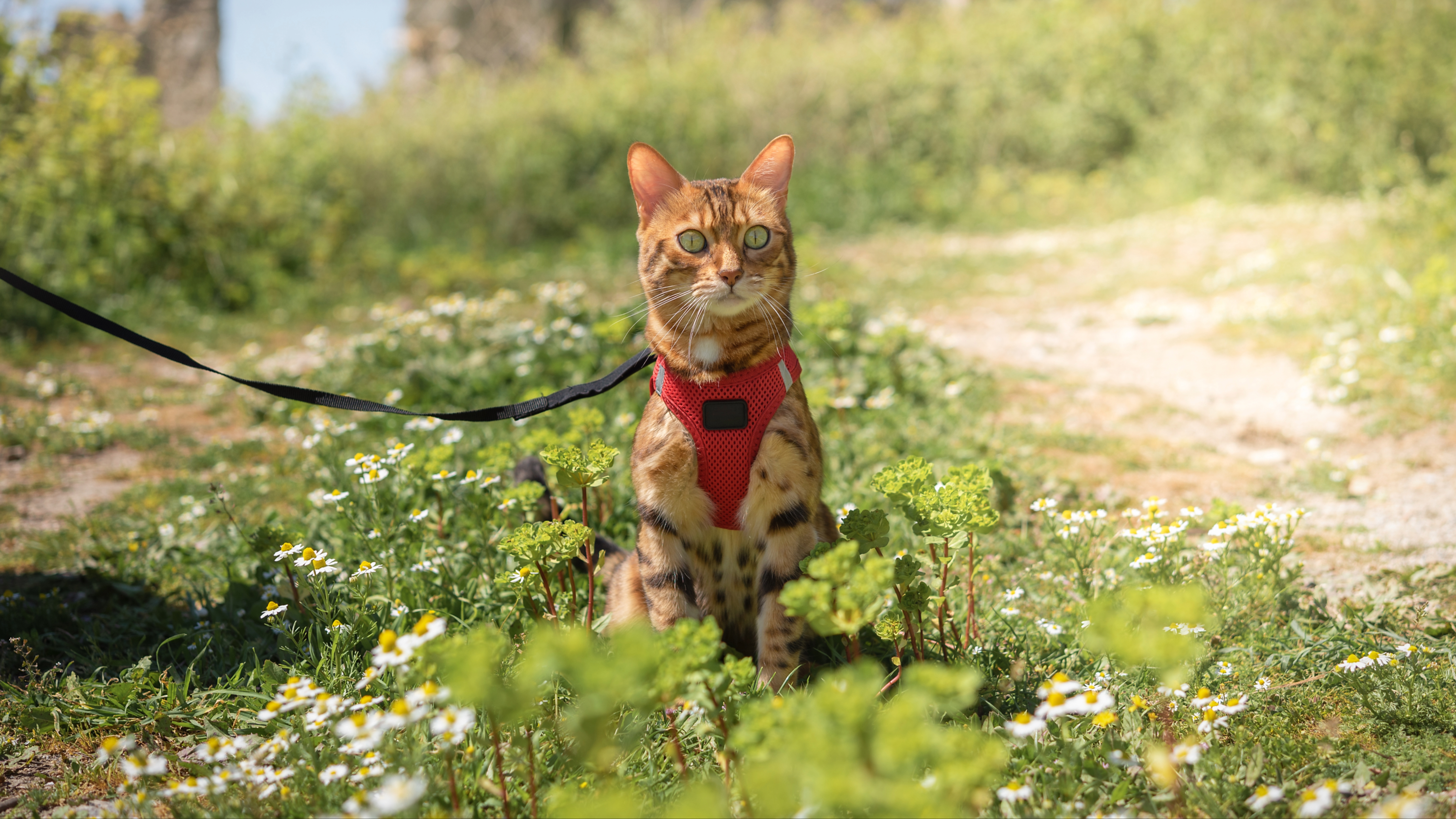
If you have an outgoing feline friend who loves accompanying you on adventures, then researching the different types of cat harnesses will ensure you select the right one to suit their personality.
The best cat harnesses for confident cats or those who love swimming, may be an H-harness which isn’t as restrictive as other types of harnesses and is quick to dry. On the other hand, for cats that try to escape or simply like feeling more secure, a jacket harness may be a better alternative.
Regardless of which option you go for, you’ll want to take it slow and steady when it comes to how to get a cat used to a harness. Even extroverted cats can take time to feel comfortable when wearing one — although some outdoor-loving breeds, like the Bengal, may be all too happy to sport one if it means they’ll soon get to feel the grass underneath their paws!
Below, we walk you through the three main types of cat harnesses with the help of expert vet Dr. Rebecca MacMillan. She also reveals her top tips for choosing a harness and how to measure your kitty with minimal fuss.
Types of cat harnesses
You’ll be relieved to learn that when it comes to the types of cat harnesses available, there are only three styles to choose from, which makes narrowing things down a whole lot easier! Let’s take a look at each cat harness in detail so that you can find the right fit for your fur baby.
1. H-harness

Your first option is what’s known as an H-harness because when it's laid out on the floor it’s shaped like, yes, you guessed it, the letter H! These are strappy in design and provide very light coverage, meaning they’re not restrictive and most fur baby’s tend to find them very comfortable to wear.
Get the best advice, tips and top tech for your beloved Pets
"The H-harness has thin straps which can feel less restrictive for some cats," confirms Dr. MacMillan. "It covers less of their body making grooming and movement easier. Cats are also unlikely to become too warm wearing while wearing one."
When the H-harness is buckled, you’ll notice that it consists of two loops that are connected together by a short strap. One of these loops fits behind your cat’s front legs and around their chest while the other goes in front of their legs.
Because the H-harness has the least amount of surface area touching your cat, they can be a really good choice if your kitty has never worn a harness before. They’re also ideal for cat breeds that like water as there’s very little material to hold water, so your cat will warm up quicker after their dip.
That being said, the H-harness does have a couple of drawbacks that are worth thinking through. They don’t spread the pressure as well as other harnesses, so if your cat is prone to darting all over the place, they may find the harness rubs in places.
"This type of harness is also less secure than other styles, which can be risky if your cat panics in a public space and wriggles free," adds Dr. MacMillan. To ensure this doesn’t happen, make sure the harness fits snuggly and let your cat wear it around the house until you’re sure they can’t get out of it.
With an eye-catching multi-colored design, your kitty will be turning heads for all the right reasons. Lightweight, comfortable to wear and adjustable, it's suitable for kittens all the way through to senior cats.
2. Vest harness
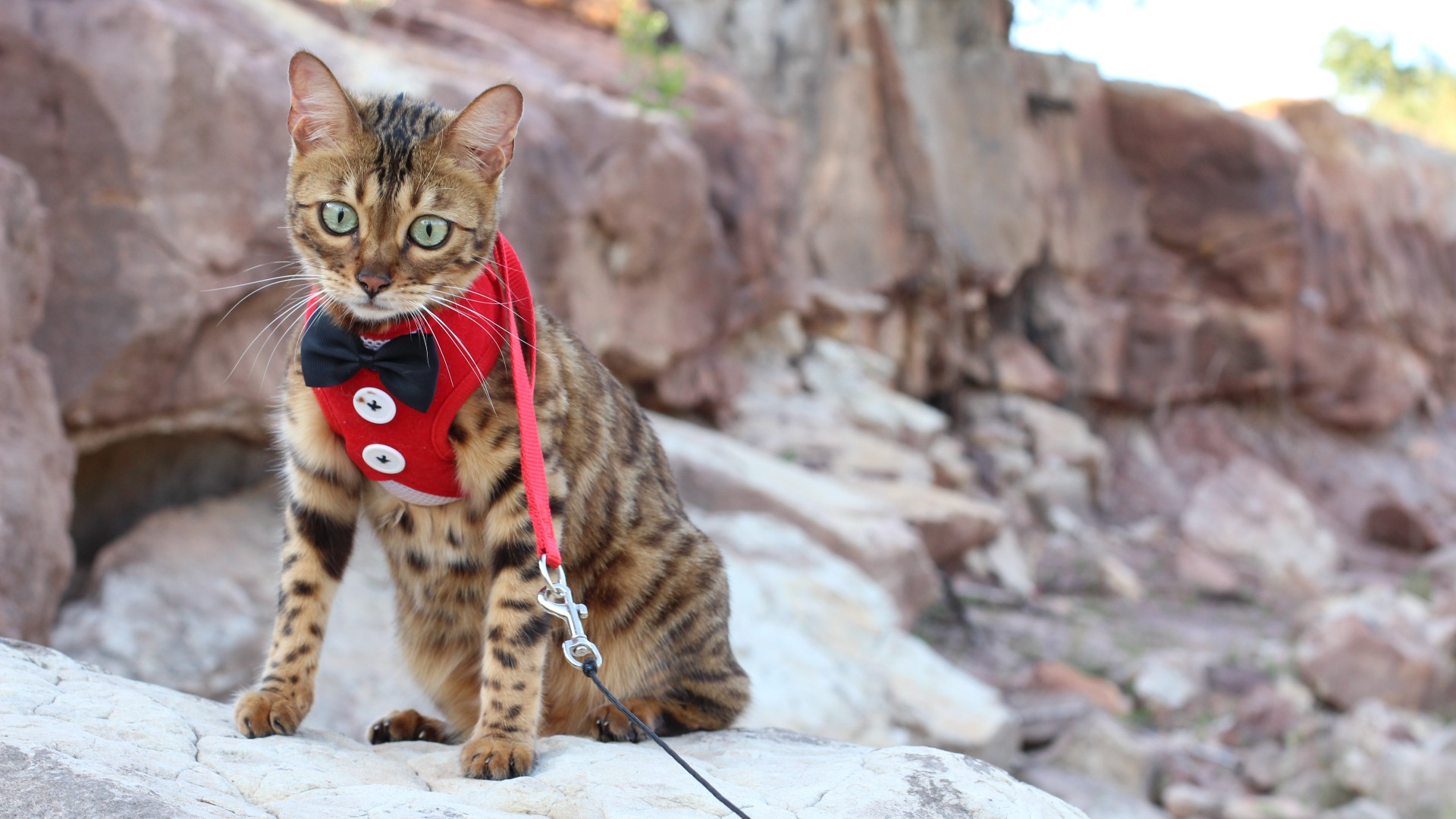
A vest harness is a wonderful choice for any cat that is super active and prone to making lots of sudden movements. They have far more contact with the body than a H-harness, meaning they do a fantastic job of keeping your cat secure.
As you’d expect, a vest harness looks like a little sweater vest that’s been tailor made for your feline friend. They’re fixed in place with velcro or buckles and come with several straps that get secured in place around the neck and legs.
"Vest harnesses cover more of your cat’s body than a H-harness which means that any pressure is spread more evenly," says Dr. MacMillan. "A vest harness is also less likely to dig in or rub than a H-harness. Because it covers more area, cats are much less likely to be able to escape from this type of harness."
If you’ve tried an H-harness in the past and found your cat quickly escapes from it or you have a cat who pulls a lot when you walk them, a vest harness is the perfect solution. Because they distribute the pressure evenly, they’re far more comfortable for active cats to wear.
"The downside is that some cats can feel restricted, so it may take longer to train them to accept this harness style," Dr. MacMillan explains. "Many are made of mesh to allow for some ventilation while wearing it, but your cat may still feel warmer than if they were wearing a H-harness."
This is our top pick for a cat harness if you happen to have a little escape artist on your hands! It features four adjustable straps which allows you to get just the right fit for your feline friend. Plus, both sides have a sturdy safety buckle for extra security.
3. Jacket harness

Another option well worth considering is a jacket harness, sometimes referred to as a butterfly harness because of the way it looks when it’s placed on the floor. A jacket harness is the ultimate harness for the cunning escape artist as it covers more of your cat’s body and has a tighter fit.
"Jacket harnesses are very similar to vest harnesses but offer even more body coverage," Dr. MacMillan confirms. "For some cats, this may mean they get a better or more comfortable fit. They will also keep your cat warmer when going out in cool weather. The downside is that some cats don’t like wearing them as they feel restricted and unable to groom that easily. They may also feel too warm in the summer months, even though many products are made from mesh-style fabrics."
However, if you tend to have a cat who gets spooked easily or you simply find that you don’t have the control you want with a vest or H-style harness, then a jacket harness is your best bet. This type of harness fastens around the neck and chest area and is super secure, fits well, and is almost impossible to wriggle out of.
Personally, we find the jacket harness to be brilliant for colder climates as because they offer maximum coverage, they do a stellar job of keeping cat’s warm. But, if you live in a warmer climate, make sure you choose one that’s labeled as ‘lightweight’ to prevent your cat from overheating.
Crafted from soft and breathable cotton, this reflective harness is gentle on the skin and won't restrict your cat's natural movements. Designed with adjustable velcro fasteners and a sturdy D-ring that you can attach a leash to, it provides a snug and secure fit.
How to choose a cat harness
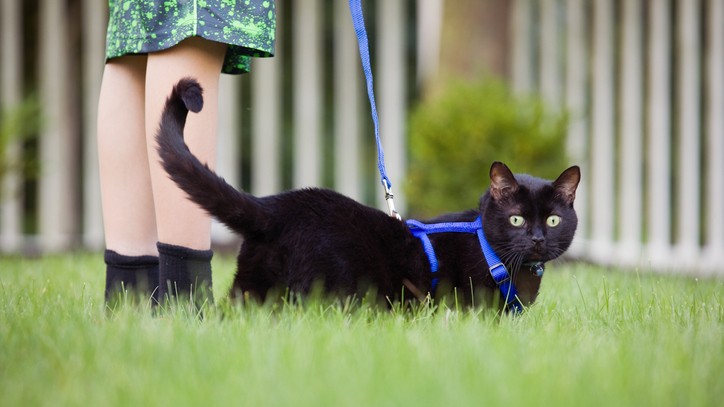
"When choosing a harness consider your pet’s personality. If they are a flight risk or get scared easily then a H-harness is definitely not for them. You will want to have them as secure as possible while out in public so a vest or jacket harness would be better.
Conversely, if you have a very relaxed cat, who loves accompanying you for picnics and enjoys being able to fully stretch out in the sunshine, then a less restrictive H-harness may suit them fine. This type of cat is rare though, so as a rule I would usually advise playing it safe and sticking to a vest or jacket-style harness.
Whatever harness you pick, make sure it is good quality, and the material is strong and durable. The D-ring should be sturdy so that it is not going to break off if your cat starts pulling on the leash.
Bright colors or reflective material can help your cat stay visible during darker evenings, especially during the winter months. This can be a helpful safety feature for owners who need to take their pets out at this time of day."
How to measure your cat for a harness
"When measuring your cat for a harness you should wrap a tape measure gently around the widest point of their chest, which is usually just behind their shoulder blades," Dr. MacMillan advises. "The tape measure should be held snugly but not tight. You may also need a neck circumference measure (where the collar normally sits) and a body length measurement (taken from the base of the neck to the base of the tail).
Check the manufacturer guidelines of your chosen harness to see which of these measurements you require. You can then use your measurements to choose the most appropriate size harness for your cat. Remember that harnesses are adjustable so you will need to check that it fits your cat comfortably and securely, without being too tight."
For more in-depth tips and tricks, check out our vet's guide on how to measure a cat for a harness.

Rebecca is a vet surgeon who graduated from the Royal Veterinary College in 2009. She has a wealth of experience in first opinion small animal practice, having done a mixture of day-to-day routine work, on-call emergency duties and managerial roles over the years. She enjoys medicine in particular and she is proud to have recently achieved a BSAVA postgraduate certificate in small animal medicine (with commendation). She writes on various feline and canine topics, including behavior, nutrition, and health. Outside of work and writing she enjoys walking her own dog, spending time with her young family and baking!

Kathryn is a freelance writer who has been a member of the PetsRadar family since it launched in 2020. Highly experienced in her field, she's driven by a desire to provide pet parents with accurate, timely, and informative content that enables them to provide their fur friends with everything they need to thrive.
Kathryn works closely with vets and trainers to ensure all articles offer the most up-to-date information across a range of pet-related fields, from insights into health and behavior issues to tips on products and training.
When she’s not busy crafting the perfect sentence for her features, buying guides and news pieces, she can be found hanging out with her family (which includes one super sassy cat and a kitten), drinking copious amounts of Jasmine tea and reading all the books.
She has written for a range of publications, including Fit&Well, Top Ten Reviews, LiveScience, Goodto, and Product Hunt.
